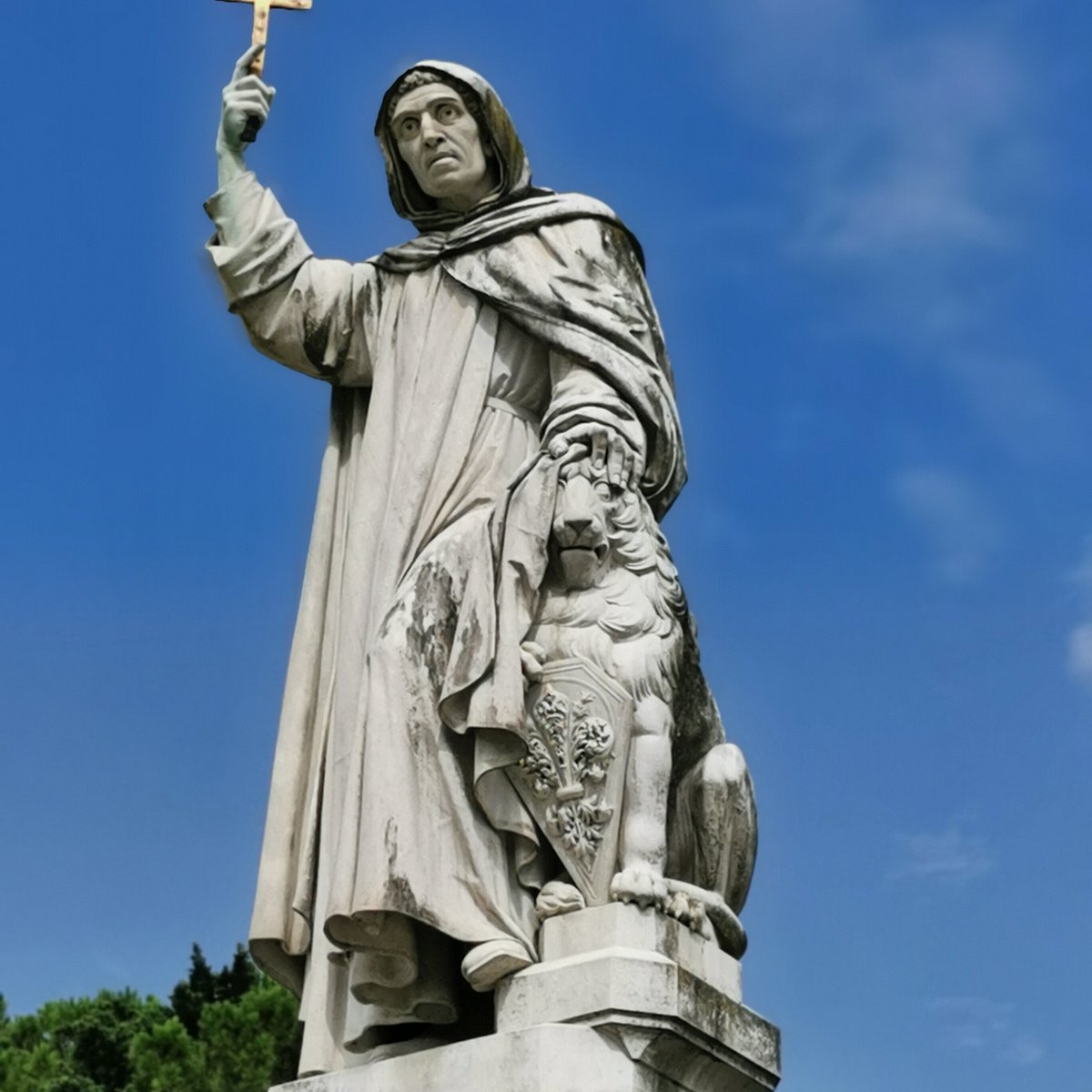Girolamo Savonarola was a Dominican friar and a political leader. He was active in Florence, second half of the XV century, and fomented important religious and social changes: he preached against the tyrannical abuses of the Medici, denounced clerical corruption and started a crusade against the excesses of wealth and luxury. He condemned all those precious goods that were to epitomize the spirit of the Renaissance: a culture oriented towards the pursuit of beauty. Thanks to his prophetical sermons, emphasising Christ’s return he worked to establish a “Christian republic” and gained great political power and numerous followers.
Savonarola succeeded to organise several “Bonfires of Vanities” during which works of art, jewels, fine dresses, make up, mirrors, musical instruments, manuscripts and even paintings were destroyed.
Not surprisingly, Savonarola made many powerful enemies. Among them was the Borgia pope, Alexander VI, who had good reason to feel uncomfortable with the Dominican’s denunciation of the laxity and luxury of the Church and its leaders, and who eventually excommunicated him. On Palm Sunday in 1498 Savonarola was arrested with two friars who were among his most ardent followers, Fra Dominico and Fra Salvestro. All three were cruelly tortured before being condemned as heretics.
On the morning of May, 23rd a crowd of Florentines gathered in Piazza della Signoria to see the execution of Girolamo Savonarola and his two companions. The three were hanged and burned. What little was left of the three Dominicans was thrown into the River Arno, to condemn definitely them and their memories.
However, the following days people left flowers and rose petals on the exact point of the martyrdom. Since then, every year, Florentines this same gesture in an official ceremony, named “Fiorita”. Beautiful flowers are laid in Piazza della Signoria and the ceremony continues with an historical procession arriving at Ponte Vecchio where petals of roses are symbolically thrown on the Arno river.

